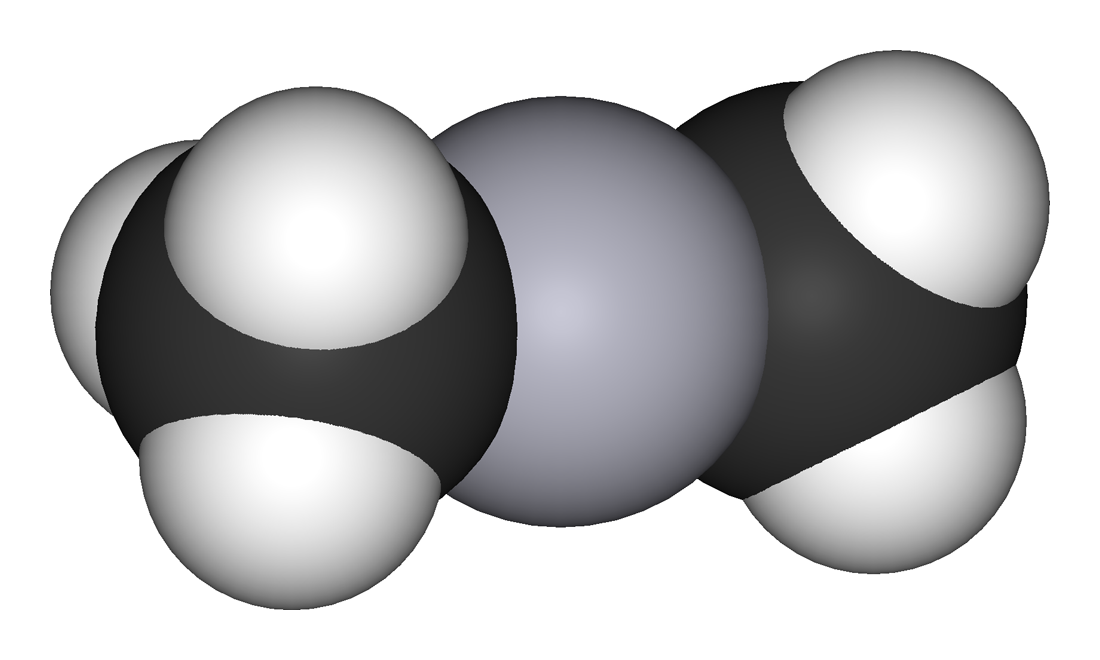Chemistry is the language of life and the universe. It builds our bodies, fuels our technologies, and shapes the very fabric of matter itself. But chemistry also has a darker side—a side where certain substances are so dangerous, so toxic, or so unstable that they can harm, kill, or even obliterate entire environments. Throughout history, scientists, governments, and even nature itself have revealed a catalog of chemicals so hazardous that just a few drops, a single breath, or even the mere act of handling them incorrectly can prove fatal.
In this article, we will explore ten of the most dangerous chemicals known to science. These substances are not simply toxic in the usual sense; they are chemical nightmares that represent the extreme edges of lethality, instability, or destructive potential. Understanding them is both a scientific necessity and a sobering reminder of how thin the line can be between knowledge and catastrophe.
1. Dimethylmercury (C₂H₆Hg)
Imagine a substance so toxic that a few drops spilled on a glove could kill you months later. That is the chilling reality of dimethylmercury, an organomercury compound once used in laboratory research.
Dimethylmercury is one of the most powerful neurotoxins ever discovered. It can cross latex gloves, skin, and even certain protective materials, seeping into the bloodstream. Once inside the body, it binds tightly to proteins and accumulates in the brain, causing devastating neurological damage.
Perhaps the most infamous case occurred in 1996, when Dartmouth chemistry professor Karen Wetterhahn was accidentally exposed to a few drops. Despite wearing gloves, the chemical penetrated within seconds. Months later, symptoms appeared—loss of balance, impaired speech, cognitive decline. Less than a year after exposure, she tragically died.
Dimethylmercury is now rarely used in laboratories, precisely because it is too dangerous to handle safely. Its legacy stands as a cautionary tale about respecting the hidden dangers of chemistry.
2. Polonium-210 (Po-210)
Radioactive elements are inherently dangerous, but polonium-210 is in a class of its own. This rare isotope, discovered by Marie Curie in 1898, is incredibly radioactive. Just a few micrograms—smaller than a grain of sand—can be lethal if ingested or inhaled.
Polonium-210 emits alpha radiation, which cannot penetrate skin but wreaks havoc when inside the body. Once ingested, it bombards tissues with a torrent of radiation, destroying cells, damaging DNA, and causing organ failure.
This substance gained global notoriety in 2006 when Russian ex-spy Alexander Litvinenko was poisoned with polonium-210 in London. His death was slow and agonizing, marked by radiation sickness symptoms such as hair loss, immune collapse, and organ damage.
Because it is both incredibly toxic and difficult to detect, polonium-210 is considered one of the deadliest assassination tools in modern history.
3. VX Nerve Agent
When scientists created VX nerve agent in the 1950s, they inadvertently produced one of the most lethal chemical weapons ever devised. VX belongs to a class of compounds known as organophosphates, which interfere with the nervous system by blocking the enzyme acetylcholinesterase.
This enzyme is crucial for regulating nerve impulses. Without it, nerves fire uncontrollably, leading to convulsions, paralysis, and death by respiratory failure. A single drop of VX on the skin can kill within minutes.
VX is odorless, tasteless, and highly persistent in the environment, making it even more insidious. Unlike some nerve agents that dissipate quickly, VX can linger for days, contaminating surfaces and soil.
The international community has banned VX under the Chemical Weapons Convention, but its chilling reputation endures. In 2017, VX was used in the assassination of Kim Jong-nam, the half-brother of North Korean leader Kim Jong-un, at a Malaysian airport.
4. Botulinum Toxin
Ironically, one of the most dangerous chemicals in the world is also used in beauty treatments under the name Botox. Produced by the bacterium Clostridium botulinum, botulinum toxin is the most potent biological toxin known to science.
Botulinum toxin works by blocking the release of acetylcholine at nerve endings, effectively paralyzing muscles. In tiny, controlled doses, it can smooth wrinkles or treat muscle disorders. But in larger amounts, it causes botulism, a potentially fatal illness.
To put its lethality in perspective: just a few nanograms per kilogram of body weight can be deadly. For an average human, that’s less than the weight of a grain of salt. Victims of botulism experience blurred vision, muscle weakness, difficulty swallowing, and ultimately respiratory failure.
Because of its extreme toxicity, botulinum toxin is classified as a potential bioweapon. Yet in the controlled world of medicine, it also demonstrates how even the most dangerous substances can have beneficial uses when handled responsibly.
5. Ricin
Derived from the castor bean plant, ricin is a deadly natural poison. While the beans themselves are not extremely dangerous, extracting ricin from them yields a highly toxic protein.
Ricin works by blocking protein synthesis within cells. Without proteins, cells die, leading to organ failure and death. Ingesting just a few milligrams can be lethal, and inhalation or injection is even more dangerous.
Unlike some poisons, there is no antidote for ricin poisoning—only supportive care to try to keep the victim alive. Symptoms include nausea, vomiting, diarrhea, seizures, and organ damage.
Ricin has a grim history as a weapon. Perhaps the most famous case was the assassination of Bulgarian dissident Georgi Markov in 1978, who was killed when an assassin used an umbrella tip to inject a ricin-laced pellet into his leg.
Today, ricin remains a potential bioterrorism threat, though its production is risky and difficult to weaponize on a large scale.
6. Chlorine Trifluoride (ClF₃)
If hell had a chemical, it might be chlorine trifluoride. This compound is so reactive and unstable that even the most hardened chemists fear it. First developed by Nazi Germany during World War II for use as a potential incendiary weapon, it remains notorious for its destructive power.
Chlorine trifluoride is a violent oxidizer, capable of igniting materials that normally don’t burn—such as asbestos, concrete, and sand. It reacts explosively with water, releasing toxic gases. Even a small spill can set fire to nearly anything in its path.
In one infamous accident, a tank containing tons of chlorine trifluoride ruptured, burning through a concrete floor and leaving massive devastation. The only reason the disaster didn’t escalate was because firefighters wisely refused to use water, knowing it would make the situation worse.
Because it is nearly impossible to handle safely, chlorine trifluoride has no practical use outside of highly specialized industries. It remains a reminder that some chemicals are too dangerous even for science to control.
7. Cyanide Compounds
Few poisons have the infamous reputation of cyanide. Used throughout history in assassinations, suicides, and executions, cyanide works by preventing cells from using oxygen.
Cyanide compounds—such as hydrogen cyanide (HCN), potassium cyanide (KCN), and sodium cyanide (NaCN)—bind to an enzyme in mitochondria called cytochrome c oxidase. This halts cellular respiration, suffocating cells from the inside out.
Death from cyanide poisoning can occur within minutes, often accompanied by dizziness, headache, nausea, rapid breathing, and eventual collapse. In concentrated form, hydrogen cyanide is a deadly gas used historically in chemical warfare and mass killings.
Despite its lethality, cyanide is also used in industries such as mining and electroplating. This duality—both industrial tool and lethal poison—makes it one of the most infamous chemicals in human history.
8. Batrachotoxin
While many dangerous chemicals are synthetic, some of the deadliest come straight from nature. Batrachotoxin, found in the skin of the golden poison dart frog (Phyllobates terribilis), is among the most lethal natural toxins known.
Indigenous people of Colombia once used this toxin to coat the tips of blow darts for hunting. Just touching the frog can be deadly, as batrachotoxin seeps into the skin and enters the bloodstream.
Batrachotoxin disrupts the function of sodium channels in nerve and muscle cells, causing paralysis and cardiac arrest. To give perspective: a single frog carries enough toxin to kill 10 humans.
Unlike some poisons, there is no known antidote. Victims usually die from respiratory failure within hours. The frog itself, immune to its own toxin, continues to serve as a living reminder of nature’s unparalleled chemical arsenal.
9. Azidoazide Azide (C₂N₁₄)
Some chemicals are dangerous not because of their toxicity but because of their sheer instability. Azidoazide azide, one of the most explosive compounds ever created, falls into this category.
This nitrogen-rich compound is so unstable that it can detonate from the slightest disturbance—light, heat, friction, or even being left alone for too long. Researchers who synthesized it described it as explosively unpredictable, to the point that simply studying it was a near-impossible task.
While it has no practical use, azidoazide azide demonstrates the extremes of chemical reactivity. It’s a molecule that embodies chaos—more a curiosity than a tool, but one that terrifies even the most experienced chemists.
10. Thioacetone
Unlike many lethal chemicals, thioacetone is dangerous not because it kills quickly but because it creates unbearable chaos wherever it goes. Known as one of the worst-smelling substances on Earth, thioacetone can cause nausea, vomiting, unconsciousness, and panic even in trace amounts.
First reported in Germany in the 19th century, a single small accident involving thioacetone released a stench that caused entire neighborhoods to flee, with people collapsing in the streets from sheer sickness.
While not as outright deadly as nerve agents or radioactive poisons, thioacetone’s ability to incapacitate large populations with its overwhelming stench earns it a place among the most notorious chemicals known to science.
Conclusion
The world of chemistry is both beautiful and terrifying. On one hand, it has given us medicine, energy, and technology that define modern civilization. On the other, it has revealed substances so dangerous that they can kill with a single drop, devastate entire environments, or defy human control altogether.
From dimethylmercury to VX nerve agent, from polonium-210 to the golden poison frog’s toxin, these chemicals are stark reminders of nature’s and humanity’s ability to create and harness deadly power.
Studying these substances is not about fear—it is about respect, caution, and understanding. For it is only through knowledge that we can prevent their misuse, protect ourselves from accidents, and marvel at the razor’s edge where science and danger meet.






